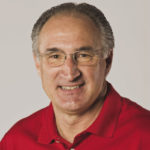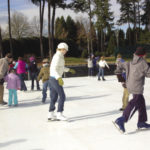 Atlanta Athletic Club once again lived up to its middle name as host of this year’s PGA Championship, as a “groundbreaking” new golf venue added to its legacy of energy and flexibility.
Atlanta Athletic Club once again lived up to its middle name as host of this year’s PGA Championship, as a “groundbreaking” new golf venue added to its legacy of energy and flexibility.
From time to time during the history of the Atlanta Athletic Club (AAC), the suggestion has come up that the club might want to consider changing its name. “It’s an unusual ‘middle name’ and does get some people confused; they think we’re like the fitness club down the street,” says Chris Borders, CCM, AAC’s long-time General Manager. Marketing experts have even been consulted about the issue, Borders says, and proposed alternatives like “Atlanta Athletic and Country Club” have been put on the table. But in the end, he adds, “tradition always wins out.”
That’s certainly understandable, given the depth of the tradition that’s involved. When founded in 1896, the club was actually in downtown Atlanta, and a full scope of athletic activities was offered to members as part of AAC’s original profile as a city club that included everything from badminton to bowling to club baseball and basketball teams that competed in national amateur competitions. The club’s first Athletic Director, in fact, was John Heisman, who went on to coach football at Georgia Tech and eventually have his name put on a trophy that developed quite a tradition of its own.
After the club added a location in 1908 on the outskirts of Atlanta, so it could add golf as another recreational option for members, it did create a new name, East Lake Country Club, for that part of its operation. Tradition really took hold at this point, because East Lake CC is where the son of an AAC member, Bobby Jones, learned to play the game.
Jones remained closely tied to the club through his rise to become the world’s most famous amateur golfer after completing, in 1930, the grand slam of the game’s four major tournaments at the time. He served as President of the club and remained an active member until his death in 1972, even after AAC moved in 1966 to its present location in suburban Johns Creek (adding to potential name-related confusion, the East Lake property was sold and is now the separate and private East Lake Golf Club).
Traditional Greeting
While AAC may have long since left Atlanta proper, and changed dramatically from its original profile as a non-golf city club, it has never forgotten where it came from, or relinquished its status as one of the preeminent recreational properties not only in that city, but the South and beyond.
Today, a striking statue of Jones greets visitors to Johns Creek, as the centerpiece of a Centennial Garden built for AAC’s 100th anniversary. Inside the clubhouse, an impressive collection of some of golf’s rarest memorabilia is displayed tastefully in The Robert Tyre Jones, Jr. Room, which is open (by appointment) to the public and has several thousand visitors each year.
But the club hasn’t relied solely on the Jones connection to maintain and bolster its golfing legacy. Today, golf at AAC includes two championship 18-hole courses as well as a nine-hole, par-3 course, the R.T. Jones, Jr. Instruction Center, and a practice range where over 10 million balls are hit each year.

The exciting playoff win by Keegan Bradley in this year’s PGA Championship added to a rich golf history at AAC.
Since moving to Johns Creek, the club has also been the site of a U.S. Open, several top junior, amateur and women’s competitions, and three PGA Championships—in 1981, 2001 and last month’s exciting tournament, which featured Keegan Bradley’s thrilling last-minute comeback to make up five shots on the last three holes and then win a three-hole playoff vs. Jason Dufner.
Much more golfing prominence is likely to be in AAC’s future, and not just from events like the 2014 U.S. Amateur that is already scheduled to be held at the club. Even with all of the ways in which its size and history have a made a mark on the game to date, the club may prove to have made its greatest impact on golf through the renovations that were made to its Highlands Course (as part of a complete Rees Jones remodeling) in preparation for this year’s PGA.
That course now features Champion ultradwarf bermudagrass greens and Diamond zoysia tees and fairways, replacing the bentgrass greens and Bermuda tees and fairways that had been much more susceptible to blight (even more so in the recent summers of extreme and extended heat and humidity). Even in the midst of another legendary stretch of summer weather in “Hotlanta,” the AAC course makeover more than held up to TV’s high-definition scrutiny during the PGA, showing remarkable color contrast while still ensuring challenging but fair playing conditions.
The work at AAC, led by Ken Mangum, Director of Courses and Grounds, is now being hailed as a revolutionary breakthrough that other Southeastern U.S. courses are expected to follow, which in turn could curtail the perceived “East Coast bias” for selecting major championship sites.
Off-Course Attractions

The F&B team worked with 2010 winner Martin Kaymer (in suit) to host a successful, German-themed Champions’ dinner.
As it continues to make a world-renowned name for itself in this fashion, it would be understandable if a suggestion to change the AAC to the Atlanta Golf Club might be one that would finally gain legs. But that would ignore how AAC’s 2,000 members also use the club for so many other purposes. The site also includes a 42,000-sq. ft. fitness center that gets 80,000 visits per year; lighted outdoor Har Tru clay tennis courts and Deco Turf hard courts (plus a stadium setting that has hosted pro events like the 2010 Atlanta Tennis Challenge); an air-conditioned indoor tennis facility; an Olympic-sized pool; a spa, and many other unique features (full-court basketball is still available).
The AAC staff of 300 employees takes full advantage of the natural beauty of the sprawling yet serene, 520-acre property by incorporating it into popular regular activities such as hayrides and jazz concerts on the lawn. A “divot-fillin’ and pig-pickin’” barbecue rewarded members for their help with pre-PGA golf course maintenance. One especially popular feature has been a “River Float” that takes members for a mile ride along a section of the Chattahoochee River that runs through the grounds; after coming ashore, the participants are treated to a special fish fry/BBQ.
Food is a natural tie-in with many of these activities, because AAC also enjoys a long-established reputation as one of the city’s finest dining and special-event venues, with over 160 catered events held at the club each year as part of a $4.5 million food-and-beverage operation. Most recently, its menus have been enhanced by output from a new, organic chef’s garden that is much more than a small patch with a few plants outside the back door of the kitchen.
In AAC’s case, a sizeable plot has taken shape in a previously unused area near the golf course. Under the primary care and cultivation of a young Sous Chef, Marshall Rogers, it now yields over 20 different vegetables in addition to a full complement of herbs, and even some berries. Already, says Clubhouse Manager Chris Clark, nearly 40% of the menu in the club’s Merion Room has been structured around the unique flavors and freshness that the garden can help to provide.
“Since farm-to-table is getting so big, we figured, why not try to create something that would be as close as we could get to a farm, right here?” Borders says. “But we didn’t go into it to save money. If we do, that’s great—but the real appeal is being able to come out here and cut an heirloom tomato that we know is of special quality, and then serve it just hours later.”

The AAC staff once again earned plaudits for its Major accomplishments during this year’s PGA Championship, with GM Chris Borders (left) being honored by PGA of America President Allen Wronowski.
Encouraging a staff member to take a new idea and run with it in this fashion has been a hallmark of AAC’s management under Borders, who has been the club’s GM since 1989 (he had previously been AAC’s Assistant GM in the 1970s, before becoming GM of Horseshoe Bend CC in Roswell, Ga.). Borders has also had to steer AAC through challenging periods, which led to some consolidation of staff positions during the most recent downturn, and also put some plans for future improvements on temporary hold (plans to expand the pool and create other new indoor and outdoor social areas are well into the drawing-board stage).
Well-respected in club management circles for his long-demonstrated ability to build a great staff by not only, in his words, “get the right people on the bus, but put them in the right seats,” Borders is constantly looking for new, cutting-edge sources of management inspiration and direction that everyone on the team can buy into and share (current required reading for the AAC staff is “Setting the Table: The Transforming Power of Hospitality in Business,” by restaurant entrepreneur Danny Meyer).
Under his steady direction, it’s long been clear that “what’s in a name” for AAC is really ageless agility, no matter what game or activity might be involved.












































































































































































































































































































































































































































Tell Us What You Think!
You must be logged in to post a comment.